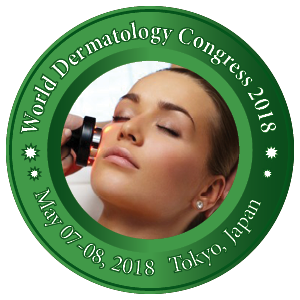Jin-Chul Kim
Department of Medical Biomaterials Engineering, College of Biomedical Science and Institute of Bioscience and Biotechnology, Kangwon National University, Chuncheon, Kangwon-do, Republic of Korea
Title: Possibility for use as a cosmeceutical material of reduction-responsive monoolein cubic phase containing epidermal growth factor
Biography
Biography: Jin-Chul Kim
Abstract
Monoolein can be eaten without causing an immune response to the human body and is used as an emulsifier in food and pharmaceutical fields. When monoolein is contacted with excess water, a cubic phase is spontaneously formed. Water channels with diameters of 2 nm to 10 nm cross each other and pass through the cubic phase, while the water channels are separated by a monoolein bilayer. These water channels encompass hydrophilic compounds and the monoolein bilayer can carry hydrophobic compounds. Cubic phase nanoparticles are small in size and have a high affinity for lipid filling between the cells of the skin, so they can penetrate through the intercellular pathways of the skin.
Reduction-responsive monoolein cubic phase was designed by immobilizing alginate and cystamine in the water channel of the cubic phase. The light scattering intensity of cystamine/alginate and alginate/EGF mixture solution were measured to investigate the crosslinking degree and the complex coacervation. Lipid bilayers and water channels, characteristic of cubic phase, were found on the TEM micrograph. According to the differential scanning calorimetric study, the phase transition occurred at 63.2℃ and it decreased significantly upon the inclusion of STAC and cystamine. Almost the same phase transition temperature was observed by polarized optical microscopy. The release degree of EGF loaded in the cubic phase increased as GSH concentration increased. It also increased with increasing pH value. Furthermore, the cubic phase did not show any skin irritation or mucosal irritation, in clinical tests.

